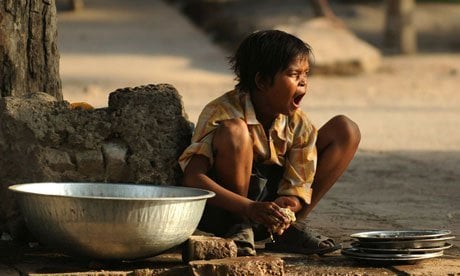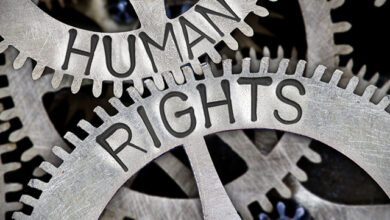Child labor and exploitation

Child labor and exploitation is a harsh reality that affects millions of children worldwide. Despite numerous international conventions and laws against it, child labor and exploitation still exist in many countries. This article aims to raise awareness about the problem and its devastating effects on children’s lives. We will explore the causes and consequences of child labor and exploitation, as well as the measures are taken to combat it. Let’s dive into the topic and understand its complexity and gravity.
Understanding Child Labor and Exploitation
Defining Child Labor and Exploitation
Child labor refers to work that deprives children of their childhood, potential, and dignity, and that is harmful to their physical and mental development. It involves children under the age of 18 working in hazardous conditions, in jobs that are inappropriate for their age, or that interfere with their education. Exploitation, on the other hand, refers to the use of children in illegal or illicit activities, such as trafficking, prostitution, and forced labor. It is a violation of their human rights and exposes them to abuse, violence, and exploitation.
Prevalence and Scope of Child Labor and Exploitation
Child labor and exploitation are widespread, affecting millions of children worldwide. According to the International Labor Organization (ILO), there were about 152 million child laborers globally in 2020, with almost half of them involved in hazardous work. The problem is more acute in low-income countries, where poverty, lack of education, and weak enforcement of laws and regulations make children vulnerable to exploitation.
Causes of Child Labor and Exploitation
Poverty and Economic Pressures
Poverty is the main driver of child labor and exploitation. Families living in poverty often resort to sending their children to work to supplement their income. They may also be forced to send their children to work due to debt or economic pressures. Lack of access to education, healthcare, and social services exacerbates the problem, trapping children in a cycle of poverty and exploitation.
Discrimination and Marginalization
Discrimination and marginalization based on gender, ethnicity, and social status are other factors that contribute to child labor and exploitation. Girls are more likely to be exploited in domestic work, while boys are more likely to work in agriculture, mining, and construction. Children from marginalized communities, such as indigenous or migrant groups, are also at higher risk of being exploited.
Weak Legal Framework and Enforcement
Weak legal frameworks and enforcement mechanisms are other contributing factors to child labor and exploitation. In many countries, laws prohibiting child labor and exploitation are either inadequate or not enforced. Corrupt officials, lack of resources, and political instability further impede the effective implementation of laws and regulations.
Consequences of Child Labor and Exploitation
Physical and Mental Health Problems
Child labor and exploitation have severe physical and mental health consequences. Children working in hazardous conditions are exposed to various occupational hazards, such as chemicals, machinery, and extreme temperatures, which can lead to injuries, illnesses, and disabilities. They are also vulnerable to physical and sexual abuse, trafficking, and other forms of violence, which can cause lasting psychological trauma.
Educational Deprivation and Loss of Potential
Child labor and exploitation often prevent children from attending school or receiving an adequate education. This deprives them of the opportunity to develop their full potential, perpetuating the cycle of poverty and marginalization. Lack of education also limits their ability to secure decent work in the future and contributes to the intergenerational transmission of poverty.
Social and Economic Costs
Child labor and exploitation have significant social and economic costs, affecting not only the children but also their families, communities, and societies. The loss of potential human capital and productivity hinders economic growth and development. Moreover, the social stigma associated with child labor and exploitation further perpetuates discrimination and marginalization, deepening social inequalities.
Combating Child Labor and Exploitation
International Conventions and Laws
International conventions and laws, such as the Convention on the Rights of the Child and the ILO Convention on the Worst Forms of Child Labor, provide a framework for combating child labor and exploitation. They establish minimum standards and guidelines for the protection of children’s rights and promote international cooperation in addressing the problem.
Education and Awareness
Education and awareness-raising programs are crucial in preventing and combating child labor and exploitation. They empower children and their families with knowledge and skills to identify and report cases of child labor and exploitation. They also promote alternative options, such as education and training, to break the cycle of poverty and marginalization.
Strengthening Legal Framework and Enforcement
Strengthening legal frameworks and enforcement mechanisms is essential in preventing and addressing child labor and exploitation. This includes developing and implementing comprehensive laws and regulations that prohibit child labor and exploitation, and strengthening the capacity of law enforcement agencies and judicial systems to effectively enforce them.
Addressing Root Causes
Addressing the root causes of child labor and exploitation, such as poverty and discrimination, is crucial in combating the problem. This requires a multi-sectoral approach, involving education, health, social services, and economic development sectors, to address the underlying factors that contribute to child labor and exploitation.
Conclusion
Child labor and exploitation is a complex and devastating problem that affects millions of children worldwide. It deprives children of their childhood, potential, and dignity, and exposes them to abuse, violence, and exploitation. Addressing the problem requires a concerted effort from governments, civil society, and the international community to strengthen legal frameworks, raise awareness, and address the root causes of the problem. It is only through collective action that we can ensure a better future for all children, free from the scourge of child labor and exploitation.



